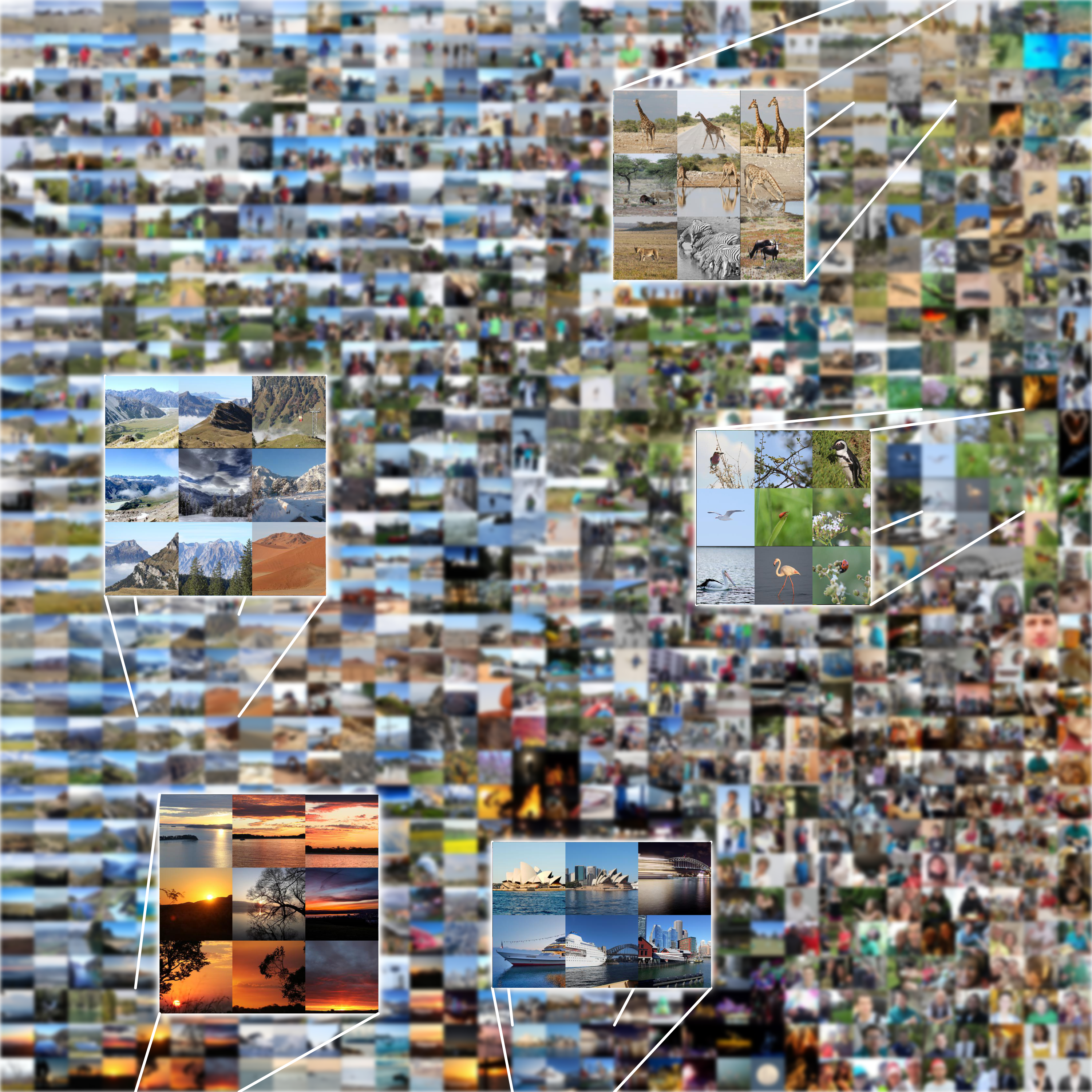Photo Clustering
How can my passions for photography and data science be combined? By using a pre-trained Deep Learning model to cluster hundreds of photos of course!
Over the past couple of years, I have taken thousands of photos, many of which I look back on way too rarely. Inspired by a blog post by Andrej Karpathy, I decided to use Deep Learning to automatically cluster my best photos that I’ve taken over the past roughly 5 years, and print the resulting collage on a large canvas for the living room.
I manually selected 1024 photos (to end up with a square of 32x32 photos), fed them into a pre-trained VGG-16 model from keras, with the final (classification) layer removed. Through that, I obtained vector embeddings for each photo (dimension: 224, 224, 3), which I used to compute pairwise similarities. Based on dissimilarity scores, I was able to project the images on a 2D space via t-SNE.
I was quite pleased with the result. The automatic clustering worked really well – clusters of animals, snow, bicycles, food, portraits, and sunrises are clearly visible. Some examples are shown below. It’s a fun way to make use of the large amount of photos I had on my hard drives, and I thoroughly enjoyed re-discovering them in this novel way of representation.

- Lessons learned in AI Governance
- My Journey from Climate Science into Responsible AI
- Photo Clustering
- Multi-objective optimisation and Pareto optimality
- Out-of-Sample Testing in Climate Science
- Climate Change Scarf
- Hackathon
- Combinatorial optimisation with Gurobi
- Visualising the model space with unsupervised learning
- Setting up Jekyll on GitHub Pages
